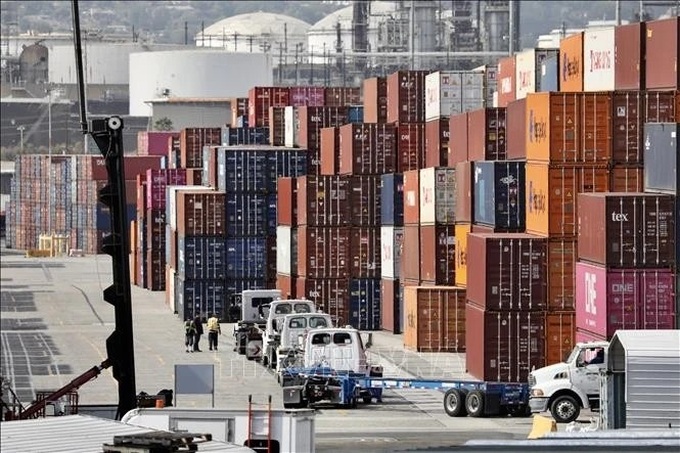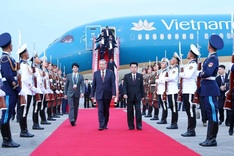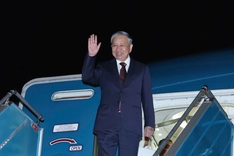
Cargo at Long Beach Port, California, the US. (Photo: Xinhua/VNA)
According to the International Trade Centre (ITC), the US continues to rely heavily on imports from ASEAN, with bilateral trade reaching USD 358.56 billion in 2024. That accounts for 10.67 per cent of total US imports (USD 3.36 trillion), up 13.3 per cent from 2023.
ASEAN is currently the fourth-largest trading bloc exporting to the US, behind the European Union, Mexico and China.
Among ASEAN members, Vietnam was the top exporter to the US last year, with shipments worth USD 142.48 billion, followed by Thailand (USD 66.01 billion) and Malaysia (USD 53.85 billion). Malaysian Prime Minister Anwar Ibrahim recently noted that exports to the US accounted for roughly 13 per cent of his country’s total exports.
Key ASEAN exports to the US include electrical machinery, industrial equipment and mechanical appliances. Vietnam led the bloc in electrical and machinery exports (USD 42.57 billion), followed by Malaysia (USD 28.43 billion). Thailand was the top exporter of auto parts (USD 2.59 billion), while Malaysia led in aircraft components (USD 450 million). Singapore stood out in pharmaceuticals, and Cambodia was prominent in garments and accessories.
In response to the risk of higher US tariffs, ASEAN has adopted a “hybrid” strategy — maintaining internal unity while allowing individual countries to engage in bilateral negotiations with Washington to safeguard national interests.
According to US trade data, several ASEAN nations face the highest proposed retaliatory tariffs: Cambodia (49 per cent), Laos (48 per cent), Vietnam (46 per cent), Myanmar (44 per cent), Thailand (36 per cent) and Indonesia (32 per cent). Meanwhile, Malaysia, Brunei, the Philippines and Singapore face lower rates, ranging from 10 to 24 per cent.




















